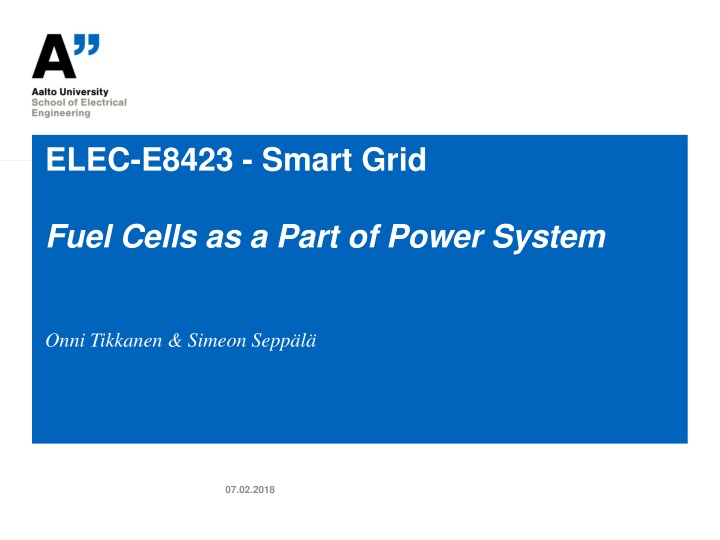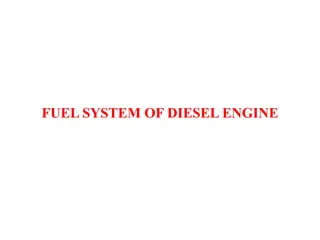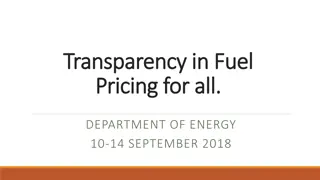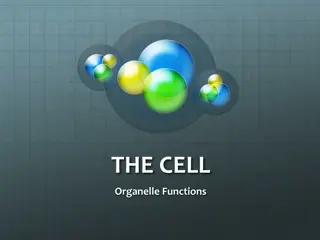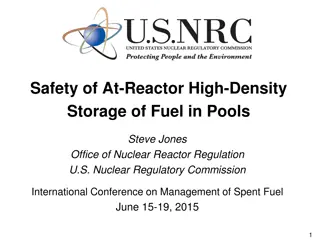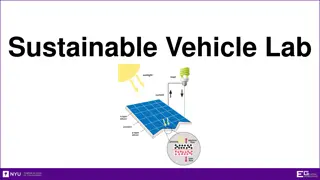Advancements in Fuel Cell Technology for Sustainable Energy Solutions
Hydrogen is gaining traction in Finland due to its potential for green energy production, with fuel cells playing a key role in harnessing this resource. Various types of fuel cell technologies are being explored, offering high efficiency and versatility for applications in industries, transportation, energy storage, and power systems. Integrating fuel cells into power systems can address the challenges posed by increased renewables penetration, providing solutions for energy storage, distributed production, and enabling greater sustainability in various sectors.
Download Presentation

Please find below an Image/Link to download the presentation.
The content on the website is provided AS IS for your information and personal use only. It may not be sold, licensed, or shared on other websites without obtaining consent from the author.If you encounter any issues during the download, it is possible that the publisher has removed the file from their server.
You are allowed to download the files provided on this website for personal or commercial use, subject to the condition that they are used lawfully. All files are the property of their respective owners.
The content on the website is provided AS IS for your information and personal use only. It may not be sold, licensed, or shared on other websites without obtaining consent from the author.
E N D
Presentation Transcript
ELEC-E8423 - Smart Grid Fuel Cells as a Part of Power System Onni Tikkanen & Simeon Sepp l 07.02.2018
Introduction Whats the Deal with Hydrogen? Hydrogen is predicted to bring around 10 billion investments to Finland The fast growth of intermittent renewable energy production (=wind power) decreases the price of electricity, which further enables the economically feasible production of green hydrogen Hydrogen can be used in many applicatons: - Carbon-free steel production and other industry processes - Fuel in transportation - Fuel in backup power plants - Energy storage - Energy carrier 07.02.2018 Page 2
Fuel Cell Technology A device that turns fuel (Hydrogen) and Oxygen directly into electricity and an end product (water) through an electrochemical reaction. Heat is produced as a byproduct. Different fuels: Hydrogen (H2) Methane (CH4) and other hydrocarbons (internal reforming) Ammonia (NH4) Methanol, ethanol Different FC technologies: - Proton Exchange Membrane Fuel Cell (PEMFC) - Solid Oxide Fuel Cell (SOFC) - Direct Liquid-Fueled Fuel Cells (e.g., DMFC) Reversible fuel cells (electrolyzers) can be used to produce Hydrogen from water using electricity 07.02.2018 Page 3
Overview of Different Fuel Cell types Higher efficiency compared to ICE Scalable: Cells can be stacked to increase the current and voltage Efficiency of SOEC:74-81 % 07.02.2018 Page 4
Economies of Fuel Cells Technolo gy PEM O&M cost /MWh/y (Alexopoulous et al. 2021) 72.5 SOFC 89.8 AFC 73 - Investment cost: 1000 - 2000 /kW (Alexopoulous et al. 2021) LCOE of hydrogen production: 115 - 335 /MWh In comparison, pumped hydro storage LCOE is approximately 50 - 250 /MWh - - 07.02.2018 Page 5
Fuel Cells in Power Systems - Higher proportion of wind and solar in power system causes challenges in a power system - More variable production: Matching demand and production is more difficult Further RES penetration in power systems will need more flexible production and energy storage Many studies propose fuel cells and P2X to be included to power system with high amount of wind and solar. - Deeper GHG emission reductions in power systems - Reduces problems related to production variation of wind and solar Proposed power system applications - Energy storage and peak power production - Distributed production and storage in residential buildings - Could enable high wind and solar off-grid systems - Marine applications: Deeper CO2 reductions in ships - - - 07.02.2018 Page 6
Fuel Cells in Power Systems Figure: Illustration of wind + solar + fuel cell power system. Image source: FuelCellWorks 07.02.2018 Page 7
Problems with fuel cells in power systems - Emissions - Utilization of natural gas or gray hydrogen should be avoided to minimize GHG emissions - Hydrogen produced from wind energy could lower life cycle emissions to 50 g CO2,eq/kWh (Bicer & Khalid 2018) Availability of rare earth metals - Large-scale production would not have enough iridium for catalyst layers - New designs attempt to replace or reduce the rare materials Relatively low life-cycle - On/Off cycles degrade the fuel cell: disadvantage in demand response - Relatively low operating hours: Less viable economically and higher life cycle emissions - - 07.02.2018 Page 8
Conclusions - Fuel Cells enable the hydrogen economy in power systems - Could reduce the effects of intermittent wind and solar power production in power systems - Still challenges related to FC reliability, economics and environmental impacts - Multiple promising technologies which could assess the current challenges 07.02.2018 Page 9
References https://yle.fi/aihe/t/18-65114 https://www.energy.gov/eere/fuelcells/fuel-cell-animation-text-version https://doi.org/10.1002/9781119191766.ch10 Halme Janne. PHYS-E6571 - Fuel Cells and Hydrogen Technology D Course Materials http://urn.fi/URN:ISBN:978-952-383-413-2 https://doi.org/10.1016/j.egyr.2021.09.050 https://www.researchgate.net/figure/Levelized-cost-of-electricity- LCOE-estimates-for-lithiumion-batteries-using-nickel_fig2_363191266 https://www.sciencedirect.com/science/article/pii/S2352484721008568 https://www.sciencedirect.com/science/article/pii/S2352484721008568 https://www.sciencedirect.com/science/article/pii/S2352484723001294 https://www.sciencedirect.com/science/article/pii/S0378779618304176 https://www.sciencedirect.com/science/article/pii/S0360319918337248 https://www.sciencedirect.com/science/article/pii/S2542435121005894 07.02.2018 Page 10
